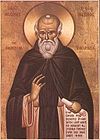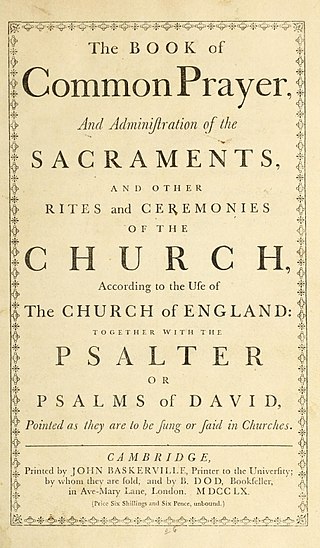
The Book of Common Prayer (BCP) is the name given to a number of related prayer books used in the Anglican Communion and by other Christian churches historically related to Anglicanism. The first prayer book, published in 1549 in the reign of King Edward VI of England, was a product of the English Reformation following the break with Rome. The 1549 work was the first prayer book to include the complete forms of service for daily and Sunday worship in English. It contains Morning Prayer, Evening Prayer, the Litany, Holy Communion, and occasional services in full: the orders for Baptism, Confirmation, Marriage, "prayers to be said with the sick", and a funeral service. It also sets out in full the "propers" : the introits, collects, and epistle and gospel readings for the Sunday service of Holy Communion. Old Testament and New Testament readings for daily prayer are specified in tabular format, as are the Psalms and canticles, mostly biblical, to be said or sung between the readings.

The liturgical year, also called the church year, Christian year, ecclesiastical calendar, or kalendar, consists of the cycle of liturgical days and seasons that determines when feast days, including celebrations of saints, are to be observed, and which portions of scripture are to be read.

Liturgical colours are specific colours used for vestments and hangings within the context of Christian liturgy. The symbolism of violet, blue, white, green, red, gold, black, rose and other colours may serve to underline moods appropriate to a season of the liturgical year or may highlight a special occasion.
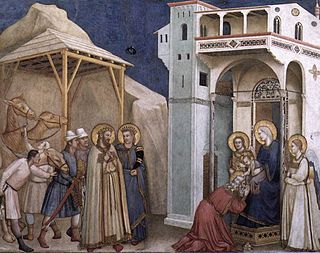
The Twelve Days of Christmas, also known as the Twelve Days of Christmastide, are the festive Christian season celebrating the Nativity.
Kingdomtide or the Kingdom Season is a liturgical season observed in the autumn by some Anglican and Protestant denominations of Christianity. The season of Kingdomtide was initially promoted in America in the late 1930s, particularly when in 1937 the US Federal Council of Churches recommended that the entirety of the summer calendar between Pentecost and Advent be named Kingdomtide. In practice, most denominations that have adopted the Kingdom Season have restricted it to the later autumnal part of Ordinary Time.
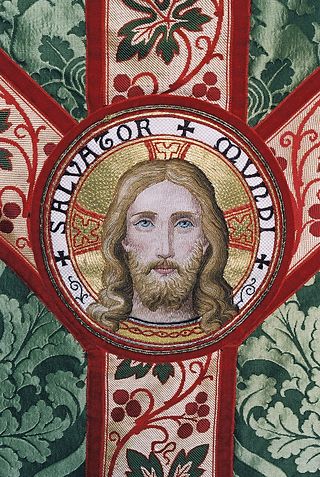
Ordinary Time is the part of the liturgical year in the liturgy of the Roman Rite, which falls outside the two great seasons of Christmastide and Eastertide, or their respective preparatory seasons of Advent and Lent. Ordinary Time thus includes the days between Christmastide and Lent, and between Eastertide and Advent. The liturgical color assigned to Ordinary Time is green. The last Sunday of Ordinary Time is the Solemnity of Christ the King.

Septuagesima is the ninth Sunday before Easter, the third before Ash Wednesday. The term is sometimes applied to the seventy days starting on Septuagesima Sunday and ending on the Saturday after Easter. Alternatively, the term is sometimes applied also to the period sometimes called pre-Lent that begins on this day and ends on Shrove Tuesday, the day before Ash Wednesday, when Lent begins.

Stir-up Sunday is an informal term in Catholic and Anglican churches for the last Sunday before the season of Advent. It gets its name from the beginning of the collect for the day in the Book of Common Prayer, which begins with the words, "Stir up, we beseech thee, O Lord, the wills of thy faithful people...", but it has become associated with the custom of making the Christmas puddings on that day. The Christmas pudding is one of the essential British Christmas traditions and is said to have been introduced to Britain by Prince Albert, husband of Queen Victoria. Most recipes for Christmas pudding require it to be cooked well in advance of Christmas and then reheated on Christmas Day, so the collect of the day served as a useful reminder.
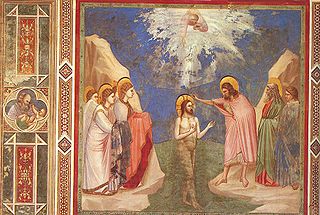
The Feast of the Baptism of the Lord, or Theophany, is the feast day commemorating the baptism of Jesus in the Jordan River by John the Baptist. Originally the baptism of Christ was celebrated on Epiphany, which commemorates the coming of the Magi, the baptism of Christ, and the wedding at Cana. Over time in the West, however, the celebration of the baptism of the Lord came to be commemorated as a distinct feast from Epiphany. It is celebrated in the Catholic Church as well as the Anglican and Lutheran Churches on the first Sunday following The Epiphany of Our Lord. Some Lutheran churches celebrate it on the Sunday before Lent, or Quinquagesima.

The Solemnity of Our Lord Jesus Christ, King of the Universe, commonly referred to as the Feast of Christ the King, Christ the King Sunday or Reign of Christ Sunday, is a feast in the liturgical year which emphasises the true kingship of Christ. The feast is a relatively recent addition to the liturgical calendar, instituted in 1925 by Pope Pius XI for the Roman Rite of the Catholic Church. In 1970, its Roman Rite observance was moved from October to the last Sunday of Ordinary Time and thus to the end of the liturgical year. The earliest date on which the Feast of Christ the King can occur is 20 November and the latest is 26 November. It typically marks the end of Ordinary Time, which continues up until Advent Sunday, the first day of Advent. Depending on the year, Saint Andrew's Day, significant in some cultures, may fall prior to Advent Sunday. Thus, Christ the King is typically the last or second-to-last calendrical feast of the liturgical year.
Christian liturgy is a pattern for worship used by a Christian congregation or denomination on a regular basis. The term liturgy comes from Greek and means "public work". Within Christianity, liturgies descending from the same region, denomination, or culture are described as ritual families.

A lectionary is a book or listing that contains a collection of scripture readings appointed for Christian or Jewish worship on a given day or occasion. There are sub-types such as a "gospel lectionary" or evangeliary, and an epistolary with the readings from the New Testament Epistles.
The Revised Common Lectionary (RCL) is a lectionary of readings or pericopes from the Bible for use in Christian worship, making provision for the liturgical year with its pattern of observances of festivals and seasons. It was preceded by the Common Lectionary, assembled in 1983, itself preceded by the COCU Lectionary, published in 1974 by the Consultation on Church Union (COCU). This lectionary was derived from Protestant lectionaries in use, which in turn were based on the 1969 Ordo Lectionum Missae, a three-year lectionary produced by the Roman Catholic Church following the reforms of the Second Vatican Council.

The Feast of the Transfiguration is celebrated by various Christian communities in honor of the transfiguration of Jesus. The origins of the feast are less than certain and may have derived from the dedication of three basilicas on Mount Tabor. The feast was present in various forms by the 9th century, and in the Western Church was made a universal feast celebrated on 6 August by Pope Callixtus III to commemorate the raising of the siege of Belgrade (1456).

The Epiphany season, also known as Epiphanytide or the time of Sundays after Epiphany, is a liturgical period, celebrated by many Christian Churches, which immediately follows the Christmas season. It begins on Epiphany Day, and ends at various points as defined by those denominations. The typical liturgical color for the day of Epiphany is white, and the typical color for Epiphany season is green.

The Anglican Province of America (APA) is a Continuing Anglican church in the United States. The church was founded by former members of the Episcopal Church in the United States.
The Lutheran liturgical calendar is a listing which details the primary annual festivals and events that are celebrated liturgically by various Lutheran churches. The calendars of the Evangelical Lutheran Church in America (ELCA) and the Evangelical Lutheran Church in Canada (ELCIC) are from the 1978 Lutheran Book of Worship and the calendar of the Lutheran Church–Missouri Synod (LCMS) and the Lutheran Church–Canada (LCC) use the Lutheran Book of Worship and the 1982 Lutheran Worship. Elements unique to the ELCA have been updated from the Lutheran Book of Worship to reflect changes resulting from the publication of Evangelical Lutheran Worship in 2006. The elements of the calendar unique to the LCMS have also been updated from Lutheran Worship and the Lutheran Book of Worship to reflect the 2006 publication of the Lutheran Service Book.
The Fifth Sunday of Easter is the fifth Sunday of the Easter season, being four weeks after the Christian celebration of Easter Sunday. In Western Christianity, this day is also known as the Fourth Sunday after Easter or Cantate Sunday. Eastern Christianity also calls this day the "Fifth Sunday," but typically using an Eastern synonym for Easter; for example, Fifth Sunday of Holy Pascha or Fifth Sunday of the Resurrection. In the Byzantine Rite, this day is also known as the Sunday of the Samaritan Woman.

A liturgical book, or service book, is a book published by the authority of a church body that contains the text and directions for the liturgy of its official religious services.
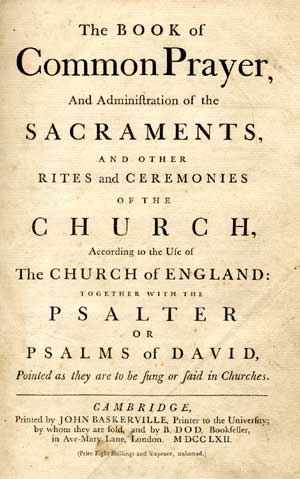
The 1662 Book of Common Prayer is an authorised liturgical book of the Church of England and other Anglican bodies around the world. In continuous print and regular use for over 360 years, the 1662 prayer book is the basis for numerous other editions of the Book of Common Prayer and other liturgical texts. Noted for both its devotional and literary quality, the 1662 prayer book has influenced the English language, with its use alongside the King James Version of the Bible contributing to an increase in literacy from the 16th to the 20th century.
















